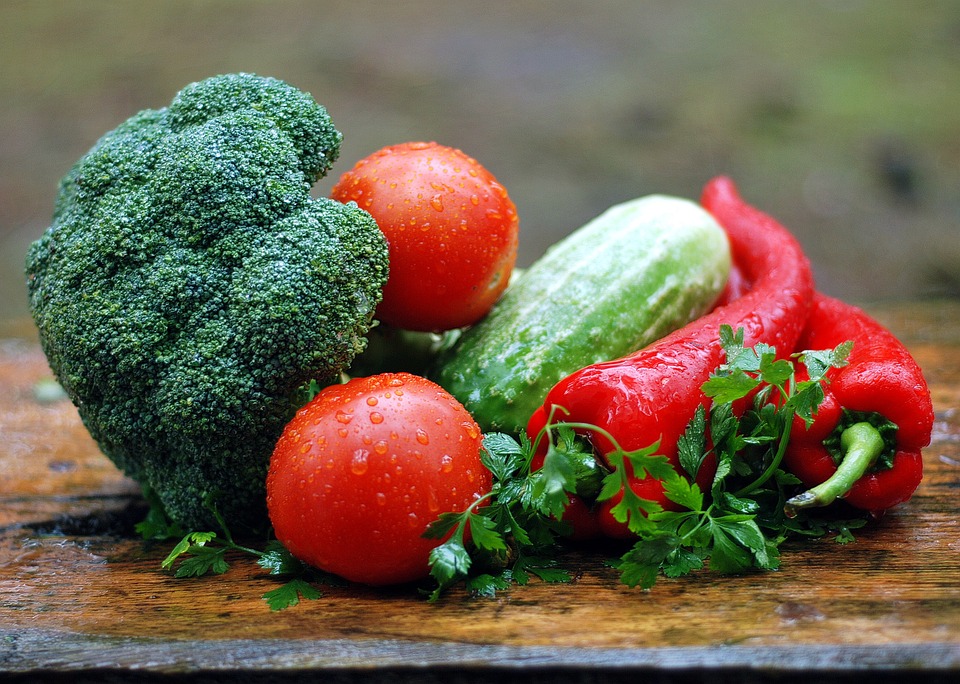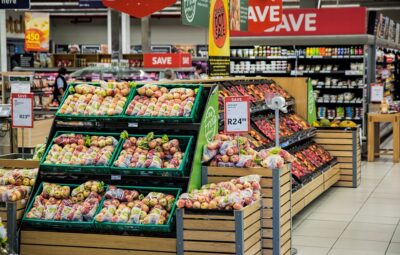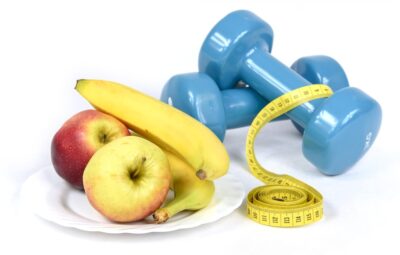What is raw food?
The raw food movement originated during the Natural Hygiene movement of the 1800s.
The “raw food” movement is defined as food that is not heated/cooked at temperatures greater than 115 to 118 degrees F. The thinking behind this is that it preserves nutrients and enzymes and uses less energy than cooking does while also keeping food in its most natural form.
A raw food diet typically consists of fresh fruits, vegetables, nuts, seeds, sprouted or soaked grains, and legumes. Typically, raw foodists are vegan (100% plant-based). However, some raw foodists also consume raw fish, meat, and dairy products.
Why is eating raw so important?
Some experts say that the raw food diet is what we would have eaten in the wild before developing agriculture, domesticating animals, and creating processed foods.
Adherents claim that raw food diets enhance health. Based on anecdotal reports, the benefits of raw eating include:
- Clear mind
- Clear skin
- Improved bowel movements
- Improved sleep
- Improved energy
- Body fat loss
Digesting raw vs cooked foods
Raw foods do not stimulate the immune system much when we eat them. Opposite of that, after eating cooked food, the levels of white blood cells can go up, which might suggest a small amount of stress in the body.
Eating and digesting raw food costs more energy than other types of food. We need to chew our food more, and our bodies need to do more work to break down what we consume. We tend to obtain less energy from raw foods.
Today, some might view this as beneficial. While the idea of getting less energy from food wasn’t very appealing, it was still better than not getting any energy from food.
Raw nature
Some people think that since other animals become large and muscular when they eat only raw plant foods, people should be able to do the same.
First, think about stomach size.
Eating a lot of raw plant foods tends to increase the capacity of your gut. Animals like cows and sheep have stomachs with multiple chambers so they can digest the cellulose they eat from grass. The animals have bacteria in their stomachs that help them break down cellulose so they can digest it.
Second, consider chewing time.
On average, chimpanzees in Tanzania spend more than 6 hours per day chewing. This is significantly more time than what most humans spend chewing, even though chimpanzees are usually smaller in size. We would spend a significant portion of our day chewing if we ate the same diet as apes. When we eat cooked food, we can save ourselves the time it would take to chew it properly.
Third, while other animals (particularly primates) have many important genetic similarities, there are also key differences.
Consider that:
- Genetic differences between humans are perhaps only 0.1% of our DNA — and yet those differences can separate a Michael Jordan from a Leonardo da Vinci.
- Our closest primate relatives may share 97-98% of our DNA.
This means that even small differences can have a large impact. Studying other animals can be helpful in understanding how humans function, but it can also lead to false assumptions.
domestication is the only way to get many “natural” foods to taste good or be full of nutrients.
Wild plants are often smaller and not as nutritious as their domesticated counterparts.
For example, early tomatoes were small and sour. The early apples were much more similar to rose hips in both appearance and taste. If you dig up the plant known as Queen Anne’s lace, you’ll find an early carrot. These carrots are bitter, white, and about the size of a pencil.
It is argued by some that a 100% raw diet is possible today because there is an abundance of food available fresh all year round.
Before farming was developed, people often went through times when they were hungry and had to rely on stored body fat to stay alive. If you were to eat a raw diet, it would be less likely that you would be able to store body fat for periods of famine.
Some experts suggest that pre-agricultural humans would have starved if they only ate raw food.
Cooking
Some anthropologists believe that the invention of cooking was a major turning point in the history of life. They argue that cooking led to increased food value, a bigger brain, and a larger body.
Charles Darwin thought that “building fire” was the most significant discovery made by humans, excluding language. Humans learned that they could make hard and stringy roots digestible by cooking them over fire, and that they could make poisonous roots or herbs harmless by cooking them in the same way. Although Darwin acknowledged that humans could technically survive without cooking if we had to, he didn’t believe that it would be preferable.
Cooking meat is important for those who eat it. Once the cooking was discovered, eating meat became more appealing and beneficial as the human body cannot process and absorb large quantities of uncooked meat properly.
What does cooking do to food?
- It can make food safer.
- It can concentrate tastes and flavors
- It can reduce spoilage
- It can soften tough foods
- It increases the amount of energy our bodies can attain from food
- It breaks starch molecules into more digestible fragments
- It denatures protein molecules
This means that the body has to work less to get benefits from the food. Lots of cooked grains make “fattening up” animals easier.
Some scientists believe that one of the main reasons why humans evolved to be the dominant species on Earth is because we are able to gain more energy from the food we eat than any other species.
Cooking food likely increased the chances of survival and reproduction. Most humans cook their food, and no civilization is known to have survived without it.
Still, health-degrading compounds can form when foods are cooked. These include acrylamide, heterocyclic amines, and Maillard compounds. You can avoid these problems by eating a raw diet.
Types of raw food diet
Many people who eat raw foods only consume plant-based meals, making it a vegan diet. Some people also consume raw or dried meat products.
There are three broad types of raw food diets:
- a raw vegan diet excludes all animal products, focusing only on plant-based foods
- a raw vegetarian diet includes plant-based foods plus raw eggs and unprocessed dairy products
- a raw omnivorous diet includes plant-based foods, raw animal products, and raw or dried meat
What can I eat?
Different people have different interpretations of the raw food diet and what it entails. Some people prefer to eat cooked food while others do not. For some people, veganism is a way of life, and for others, it is simply a dietary choice.
The following foods are suitable for most raw food diets:
- raw fruits and raw vegetables
- dried fruits and vegetables
- freshly made fruit and vegetable juices
- soaked and sprouted beans, other legumes, and grains
- raw nuts and seeds
- raw nut butters, such as peanut butter and almond butter
- nut milks, including almond milk
- coconut milk
- cold-pressed olive oil or coconut oil
- nutritional yeast
- seaweeds
- dried fruits
- green food powder, such as dried wheatgrass or algae
- fermented foods, including kimchi and sauerkraut
- purified water, but not tap water
- other organic, natural, or unprocessed foods
Depending on the type of diet, a raw food diet may also contain:
- raw eggs
- raw fish, such as sushi or sashimi
- other raw or dried meats
- non-pasteurized and non-homogenized milk and dairy products
Foods to avoid include:
- all cooked or processed foods
- refined oils
- table salt
- refined sugars and flour
- coffee, tea, and alcohol
- pasta
Olives are not typically eaten raw because they are too bitter. Tins of olives have undergone a cooking process during manufacture. Olives can be consumed on a raw food diet if they have been sun-cured.
How to prepare food
When preparing food for a raw food diet, people use various techniques such as soaking, dehydrating and juicing foods. The diet allows for chopping and blending foods.
The diet avoids any food heated beyond a certain temperature, usually 104° to 118°F, though figures may change depending on the source. The only heating allowed is with a dehydrator, which is a device that uses hot air to remove water from food.
Some fruits and vegetables can be eaten with no preparation, while others may need some additional steps. Common methods for preparing raw foods include:
- soaking beans and grains in water
- eating sprouted rather than whole grains
- drying or dehydrating fruits
- juicing fruits and vegetables or making smoothies
Benefits
There is a belief among many people who eat raw foods that it strengthens the body’s ability to fight and prevent diseases, especially chronic conditions.
A 2019 review reports that following a plant-based diet has significant benefits for physical health and disease.
Eating a raw food diet can improve your health and help you lose weight. The next sections discuss some possible benefits.
High in nutrients
A raw food diet is typically made up of mostly fruits, vegetables, nuts, and legumes – all of which are good for you. A diet consisting of a variety of these foods will ensure that you’re getting enough vitamins, minerals, and healthy fats, as well as protein.
When you cook food, it destroys some of the nutrients, like water-soluble vitamin B and vitamin C. So if you eat food raw, you’ll get more of these nutrients.
Fewer processed foods
Processed foods are generally high in salt, added sugars, and unhealthy saturated fats. The health consequences of smoking tobacco products are well-known. They can lead to inflammation of blood vessels and cardiovascular disease. Eating fewer processed foods can lead to better health.
Retaining enzymes in food
Some sources say that cooking food can destroy or change the enzymes that are naturally in them, as well as some vitamins that are essential.
The idea is that each food has been uniquely and perfectly mixed by nature, and these enzymes allow a person to fully digest their food. People who support the raw food diet say that only raw food is “live” food.
The enzymes in food are mostly destroyed by the acid in the stomach. Our bodies contain the enzymes needed to digest foods.
Other benefits
Some people believe that the raw food diet will lead to the following benefits, though these are not scientifically proven:
- more energy
- clearer skin
- better digestion
What are the risks?
Some foods are not safe to eat uncooked. Some food contains toxic chemicals which are broken down during the cooking process. Other food carries a risk of food poisoning.
According to the Centers for Disease Control, food poisoning is most likely to occur from uncooked animal products. This includes:
- raw and undercooked meat, including chicken
- raw or lightly cooked eggs
- raw (unpasteurized) milk and products made from it
- raw shellfish
You can also get food poisoning from eating raw fruits and vegetables. This means that cooked fruits and vegetables are less likely to contain bacteria. The CDC recommend always washing produce before eating it.
Nutritionists and dietitians suggest that people following a raw food diet should consume the following foods with caution:
Buckwheat greens may be poisonous if eaten raw, but there is not much research about its effect on humans. large amounts of buckwheat may cause prickly heat, a sensation of burning or prickling on the skin that is caused by exposure to sunlight.
Kidney beans: Kidney beans contain a chemical called phytohaemagglutinin. You should avoid eating raw kidney beans or sprouts as they may be poisonous. Legumes contain phytic acid, which can prevent the body from absorbing some minerals. Cooking reduces the level of phytic acid.
You can get food poisoning from eating sprouted seeds that have been contaminated with Salmonella, E. coli, or Listeria bacteria.
Cassava, also known as yucca or gaplek, is a root vegetable that can be toxic when raw. This vegetable should be peeled, sliced, and cooked thoroughly to ensure it is safe.
You can get sick from Salmonella bacteria if you eat raw eggs. In some cases, it can be fatal. Cooking eggs kills the bacteria. The CDC recommends that people use pasteurized eggs in recipes that call for raw or undercooked eggs.
Raw seafood and shellfish can contain harmful bacteria that can be passed on to people. The CDCTrusted Source recommend that people avoid raw seafood.
Raw milk may contain Listeria, a type of bacteria that can cause serious infections. Listeria has also been linked to complications during pregnancy. The Centre for Disease Control and Prevention (CDC) state that pasteurized milk contains the same health benefits as unpasteurized milk, but without the risks.
Should I try it?
Some people claim that they feel more energetic and have clearer skin after switch to a raw food diet. They also may maintain weight loss and have lower cholesterol and lipid levels.
It is important for those following a plant-based diet to get all the nutrients they need, as some nutrients are found in greater quantities in animal products.







